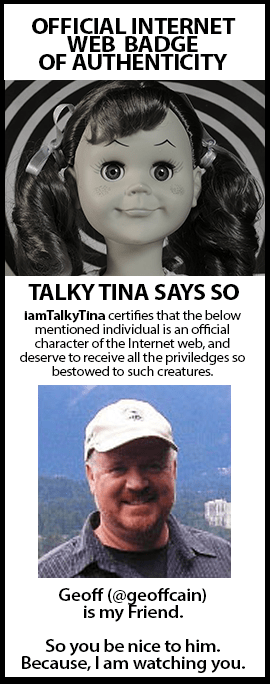 An illustration of Phelps’ Electro-motor Printing Telegraph, the last and most advanced telegraphy mechanism designed by George May Phelps. (Photo credit: Wikipedia)This is an article I wrote for the “Tech Beat” column for the Times-Standard:
An illustration of Phelps’ Electro-motor Printing Telegraph, the last and most advanced telegraphy mechanism designed by George May Phelps. (Photo credit: Wikipedia)This is an article I wrote for the “Tech Beat” column for the Times-Standard:
As one who works in online learning, I often get forwarded emails from colleagues alerting me to the dangers that might arise from using Facebook, Twitter, or other social networks. For instance, a few years back, after sending out a notice for a workshop on social networks and education, I received several emails warning me with a link to David Gardener’s article called “The Marriage Killer: One in five American divorces now involve Facebook” from the Daily Mail. This lurid article begins with, “It used to be the tell-tale lipstick on the collar. Then there were the give-away texts that spelled the death knell for many marriages. But now, one in five divorces involve the social networking site Facebook….” The implication being that I may want to be careful in promoting the use of social networks like Facebook in education because there are perils that lurk beneath the surface of the Internet that may lead to unintended and tragic consequences.
This is not surprising. I have given workshops on how to use virtual worlds in education, often using educational sites designed in the virtual world “Second Life.” Invariably, after sending out the announcement for the workshop, I will get a cautionary email such as the one informing me of the 40-year-old British couple who had famously married in Second Life in a huge wedding, but then divorced later after one of them had an alleged “affair” in the online world. The wife said that she caught her husband’s avatar having sex with another animated woman: the couple are now divorced (in the real world).
What are these stories really telling us? Is there anything really inherently dangerous in online communication? This is not a question of ‘should we’ or ‘should we not’ have relationships online. The fact is that the online world is just another medium of communication, and that is what humans do: communicate in a wide variety of ways. We are every bit as complicated in our courtship rituals and communications as the rarest of birds-of-paradise in New Guinea.
The only difference between the modern online courtship rituals and those of the past is the new medium of the Internet. There are a lot of things we are doing online that we never could have imagined doing just 10 years ago. Who would have thought that making purchases online would become so commonplace? Or online banking? Or wedding invitations?
But yet, there was something about the more recent warnings I received that seemed very familiar. And the reason is that every time we, as a culture, develop a new technology, there are always those who see it as the first step down a slippery slope that will ultimately mean the end of the world as we know it.
For example, people had been batting around the idea of the telegraph in various forms since the 1740s. Eventually, Samuel Morse developed a system that could transmit signals over long distances and by the 1860s there was a trans-Atlantic cable, a well-established telegraph network in the Northeastern United States and a network in California and other parts of the West linked by a trans-continental cable. In less than a generation, this new technology transformed how people handled money, got the news, ran elections and even fell in love!
Doesn’t this sound familiar? Sense trouble?
The stage was set for wire fraud, romances and the usual chicanery that happens when people figure out new ways to communicate with one another. There was even a novel written in 1880 by telegraph operator Ella Cheever Thayer who published the world’s first “cyber-romance.” “Wired Love: a romance of dots and dashes,” was a novel about two telegraphers who fall in love over the telegraph wires without ever meeting face-to-face. It was the mother to the film “Shop Around the Corner” (about a relationship via letters), and the grandmother to the modern email version of the love story “You’ve Got Mail.” “Wired Love” was a bestseller for 10 years, and according to Tom Standage in his book “The Victorian Internet,” relationships like this were not at all that uncommon.
For every failed relationship in cyberspace, there is an example of success. The most famous modern example is the couple in the “twitterverse,” Greg Rewis and Stephanie Sullivan (now Mr. and Mrs. Rewis). Greg Rewis proposed to his girlfriend on Twitter and sent an instant message on his phone asking her to check her Twitter account just for good measure. Later, their children sat in the church and tweeted the ceremony to those attending virtually.
Despite the “dangers,” the real lesson is that people communicate and connect with one another. This is what we do. We are very good at it. We will use all forms of communication for education, banking or socializing. Despite the warnings and cautionary tales, people will not resist using any means possible to connect with one another.
Geoff Cain is a member of the Redwood Technology Consortium and director of distance education at College of the Redwoods. Contact him at geoff-cain@redwoods.edu.





